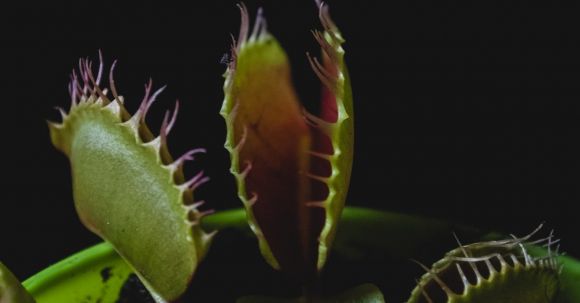The Venus Flytrap is a fascinating plant known for its carnivorous nature. It has evolved to capture and consume insects as a means of supplementing its nutrient intake. But how exactly does this extraordinary plant catch its prey? Let’s dive into the intricate mechanisms of the Venus Flytrap and explore its hunting techniques.
The Snap Trap Mechanism
The most iconic feature of the Venus Flytrap is its snap trap mechanism. This mechanism consists of two specialized leaves, each divided into two lobes. The outer edges of these lobes are lined with sensitive hairs known as trigger hairs. When an unsuspecting insect lands on the lobes and touches these trigger hairs, a series of events is set into motion.
The Triggering Process
As soon as the trigger hairs are disturbed, the Venus Flytrap springs into action. The plant requires at least two separate touches within a specific time frame to initiate the trap closure. This mechanism ensures that the plant does not waste energy on false alarms caused by non-prey items such as raindrops or debris.
The Closure
Once the trigger hairs have been stimulated twice, the Venus Flytrap rapidly closes its lobes. This process, which takes just a fraction of a second, is powered by a surge in turgor pressure within the leaves. The closure of the trap creates a seal, trapping the unsuspecting insect inside.
The Digestive Process
With its prey captured, the Venus Flytrap begins the process of digestion. The inner surface of the lobes secretes digestive enzymes, which break down the insect’s tissues into a more easily absorbable form. This enzymatic breakdown can take several days to complete, depending on the size of the prey.
Nutrient Absorption
Once the prey has been broken down, the Venus Flytrap absorbs the released nutrients through small glands on the inner surface of the lobes. These glands not only absorb the nutrients but also play a crucial role in preventing the plant from digesting itself. They produce a substance that protects the plant’s own tissues from the enzymes it secretes.
The Reopening
After completing the digestion process, the Venus Flytrap reopens its lobes. This allows any indigestible parts of the prey, such as exoskeletons, to fall out. The plant is now ready to capture its next meal.
The Energy Cost
While the Venus Flytrap’s carnivorous nature may seem advantageous, it comes at an energy cost. The trapping and digestion processes require significant energy expenditure, making it essential for the plant to be selective in its prey choices. It primarily targets small insects like flies and ants, which provide a sufficient nutrient boost without draining the plant’s resources.
Adaptations for Survival
The Venus Flytrap has undergone remarkable adaptations to ensure its survival in nutrient-poor environments. Its carnivorous nature allows it to obtain essential nutrients, such as nitrogen and phosphorus, which are often limited in the soil. By capturing and digesting prey, the plant can supplement its nutritional needs and thrive in habitats where other plants struggle.
In conclusion, the Venus Flytrap’s ability to capture prey is a remarkable adaptation that sets it apart from other plants. Through its snap trap mechanism, triggered by sensitive hairs, it quickly captures and digests insects. This carnivorous nature allows the plant to survive and thrive in challenging environments, making it a truly fascinating specimen in the world of botany.





